#nasakepler
Explore tagged Tumblr posts
Photo
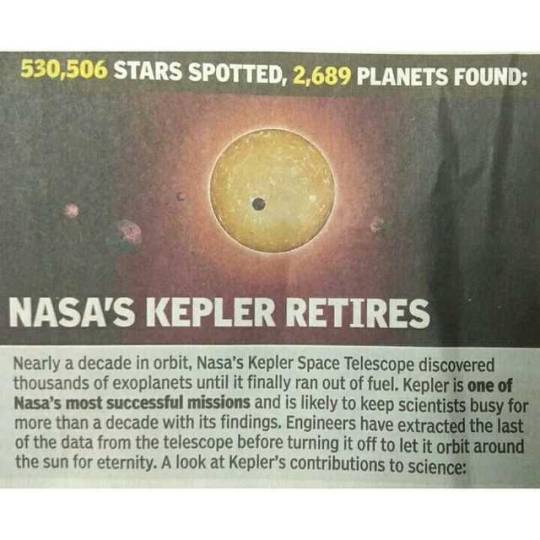
NASA's space telescope: Kepler, finally ran out of fuel after it's nearly 10 year journey. Follow @newzpic for more. . . . . . . . . . #nasanews #nasakepler #kepler #keplertrack #keplernews #keplertelescope #keplerretire #kepler22b #spacex #spacenews #spacetelescope #newzpic #newzpix #nbcnewspics (at Nasa Headquaters Washington Dc) https://www.instagram.com/p/BppIyggH4U8/?utm_source=ig_tumblr_share&igshid=7ib3k9v0a2fj
#nasanews#nasakepler#kepler#keplertrack#keplernews#keplertelescope#keplerretire#kepler22b#spacex#spacenews#spacetelescope#newzpic#newzpix#nbcnewspics
0 notes
Photo

NASA Discovers 10 Earth-like Planets NASA on Monday announced the discovery of 219 potential planets located outside our solar system, 10 of which are like Earth.
0 notes
Photo
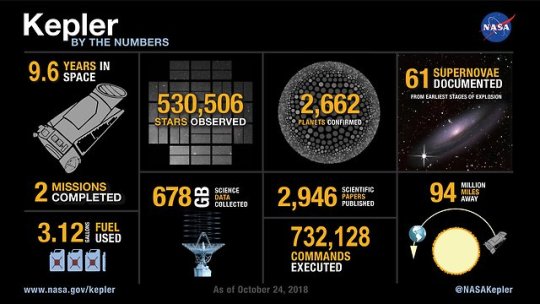
After 9 years in space collecting data that revealed our night sky to be filled with billions of hidden worlds, @NASA is retiring the @NASAKepler space telescope.
2 notes
·
View notes
Text
#NASA #AreYouReady
https://youtu.be/mB1nAzriqRQ
youtube
1st Earth-size Habitable-zone World
https://youtu.be/QU0qsIGS6MQ
youtube
NASA #Exoplanet Survey Satellite
https://www.youtube.com/user/NASAexplorer
#NASA #NasaKennedy #NasaJohnsonSpaceCenter #InternationalSpaceStation #NASAHubble #NASAEarth #NASAGoddard #NASAKepler #NASAVoyager #SpaceshipEarth #NASAConnect #Astronauts #YouthAstronauts #Twitter #Facebook #Tumblr #LinkedIn #Wix #WordPress #Instagram #Pinterest #Google #USArmedForces #USA #GodAndCountry #JimmyEveritt #TheManFromTexas #Jimmy #IfYouBuildItTheyWillCome #JimmyValentine ❤




0 notes
Photo


Nasa discovers 10 new 'rocky' planets like Earth
Space agency says latest discoveries have 'significant implications for the search for life' in other parts of the universe
The figure includes 10 that are “rocky” like Earth and which exist in their solar system's 'Goldilocks zone', neither too close to their star, and therefore too hot, nor too far away and too cold for liquid water to exist.
The presence of water is seen as a key factor for the existence of life.
In a tweet, Nasa said: "Scientists using @NASAKepler have identified 219 potential new worlds!"
The discoveries bring the total number of suspected exoplanets – planets outside our solar system – found by the Kepler space telescope to more than 4,000.
"This carefully measured catalogue is the foundation for directly answering one of astronomy’s most compelling questions – how many planets like our Earth are in the galaxy?” said Susan Thompson, a research scientist at the SETI Institute, which searches for signs of extra-terrestrial life.
Further news:
Kepler shows small exoplanets are either super-Earths or mini-Neptunes
Kepler Team Releases Final Exoplanet Catalog
Earth-Size Planets Among Final Tally of NASA’s Kepler Telescope
37 notes
·
View notes
Text
Before retiring last year, our @NASAKepler spacecraft took a "last light" look at a galaxy of possible exoplanets: https://go.nasa.gov/2MQGRi1 Now, scientists continue mining Kepler data for discoveries, while @NASA_TESS carries on the planet-hunting mission.pic.twitter.com/yPnr79Ctcz
Before retiring last year, our @NASAKepler spacecraft took a "last light" look at a galaxy of possible exoplanets: https://go.nasa.gov/2MQGRi1 Now, scientists continue mining Kepler data for discoveries, while @NASA_TESS carries on the planet-hunting mission. pic.twitter.com/yPnr79Ctcz

from Ricky Schneiderus Curation https://twitter.com/NASA/status/1093261304469618688
0 notes
Photo

RT @sarahkaplan48: We live in a universe teeming with more planets than stars. My obituary for @NASAKepler, the spacecraft that opened our eyes to our crowded cosmos: https://t.co/Jo3GZG5DfM 2PLAN22 http://twitter.com/2PLAN22/status/1057824902563151872
We live in a universe teeming with more planets than stars. My obituary for @NASAKepler, the spacecraft that opened our eyes to our crowded cosmos: https://t.co/Jo3GZG5DfM
— Sarah Kaplan (@sarahkaplan48) October 31, 2018
0 notes
Photo

#InternationalWomensDay! 📸: @nasakepler Cc: @NASA #NASA (at Toronto, Ontario)
0 notes
Photo

#Space: @NASAKepler has taught us that #rocky #exoplanets are common ► http://ift.tt/2shHhak via @AstrobiologyMag
0 notes
Photo
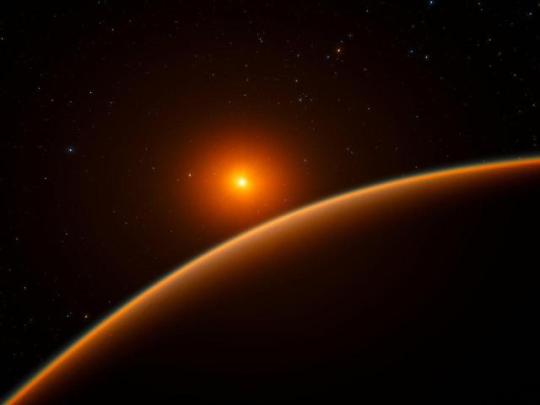
Nasa discovers 10 new 'rocky' planets like Earth
Space agency says latest discoveries have 'significant implications for the search for life' in other parts of the universe
“Nasa has announced the discovery of 219 new suspected planets outside our solar system.The figure includes 10 that are “rocky” like Earth and which exist in their solar system's 'Goldilocks zone', neither too close to their star, and therefore too hot, nor too far away and too cold for liquid water to exist.
The presence of water is seen as a key factor for the existence of life.In a tweet, Nasa said: "Scientists using @NASAKepler have identified 219 potential new worlds!"
The discoveries bring the total number of suspected exoplanets – planets outside our solar system – found by the Kepler space telescope to more than 4,000.”
(Is that good or bad? I hope they have better leadership out there... and if they do, we'd better leave them alone...)
0 notes
Text
RT @NASA: 219 potential new worlds have been identified by scientists using @NASAKepler data. Explore: https://t.co/gvIEeJnUgB https://t.co/Rj51K42UkJ
219 potential new worlds have been identified by scientists using @NASAKepler data. Explore: https://t.co/gvIEeJnUgB http://pic.twitter.com/Rj51K42UkJ
— NASA (@NASA) June 19, 2017
from Twitter https://twitter.com/LordBlade June 19, 2017 at 08:55AM via IFTTT
0 notes
Text
👽 #InTheYear2525
https://youtu.be/yesyhQkYrQM
youtube
👽 I like what the song "In The Year 2525" has to say about will man survive?
👽 I'm kind of wondering if man is going to be alive. He's taken everything this old world can give and he ain't put nothing back in.
👽 Now it's been 10,000 years and man has cried a billion tears, for what he never knew now mans reign is through!
👽#HumankindQuest
https://lnkd.in/efuy6Jk
👽#VoyagerJourneyToTheStars
https://lnkd.in/eEnkmtY
👽#VoyagerInterstellarMission
https://lnkd.in/edkqkNn
👽 #Voyager1 is in #InterstellarSpace" and #Voyager2 is currently in the #Heliosheath -- the outermost layer of the #Heliosphere where the #SolarWind is slowed by the pressure of #InterstellarGas.
👽 #Universe and the #HumanRace
https://lnkd.in/eepsBmw
👽 What does the future hold for our small blue planet and its inhabitants? The outcome depends on #PoliticalChoices. But those choices can be influenced by effective and idealistic #scientists, #environmentalists and #humanists, guided by the knowledge and technology that the #21stCentury will offer.
👽 #FuturePlanetEarth
https://lnkd.in/exTVixi
#NASA
#InternationalSpaceStation
#KennedySpaceCenter
#JohnsonSpaceCenter
#NASAJPL
#NASALSP
#NASAEO
#NASAKEPLER
#NASAJOELKOWSKY
#NASAGODDARD
#NASAVOYAGER

0 notes
Photo
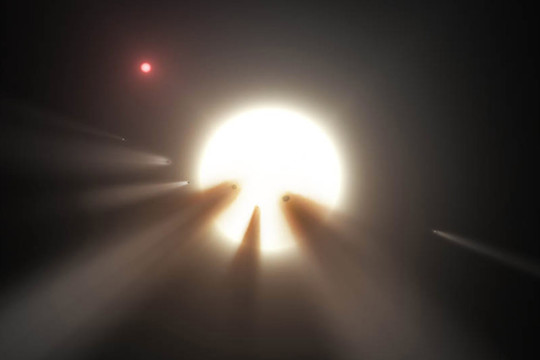
Why astronomers are scrambling to observe the weirdest star in the galaxy this weekend http://ift.tt/2q6nqEQ
It was early Thursday morning when astronomer Matt Muterspaugh noticed something strange with the star he had been observing for the last year and a half. Telescope data taken from the night before showed that the brightness of the star had dipped significantly. He contacted other astronomers who had also been observing the same star, to let them know what he had seen and to keep an eye on it for any more changes. Then by the following morning, the star had dimmed even more.
That’s when he and the others knew it was time to signal the alarm: the weirdest star in our galaxy was acting weird again. And it was time for everyone to look at this distant celestial body — to figure out what the hell is going on. “As far as I can tell, every telescope that can look at it right now is looking at it right now,” Muterspaugh, a professor at Tennessee State University, tells The Verge.
“As far as I can tell, every telescope that can look at it right now is looking at it right now.”
The star Muterspaugh has been looking at is KIC 8462852, though it’s also known as Tabby’s Star. That’s because Tabetha Boyajian, an astronomer at Louisiana State University, first noticed this strange star a couple years ago after looking through archive data from Kepler — a NASA spacecraft that’s been hunting for planets that exist outside of our Solar System. Boyajian was part of a citizen science project called Planet Hunters, where volunteers can analyze Kepler data to look for planets, and they alerted her to the wonky star. “Our users flagged it to be something really interesting,” Boyajian tells The Verge. “They came to the science team and asked, ‘What is this? That’s not a planet clearly.’”
The data showed that KIC 8462852 experienced some extreme fluctuations in brightness, way more than what a passing planet would cause. At one point, the star’s light dimmed by up to 20 percent. It was a huge dip, like nothing that had ever been seen before, indicating something big and irregular may be orbiting around the star.
@ajebson @NASAKepler @LCO_Global @keckobservatory @AAVSO @nexssinfo @NASA @NASAHubble @Astro_Wright @BerkeleySETI @ESO its 2% in r' band and looks like its the start http://pic.twitter.com/TjJdSY2ar9
— Tabetha Boyajian (@tsboyajian) May 19, 2017
Then in late 2015, astronomer Jason Wright from Penn State suggested a tantalizing scenario for the dips. Perhaps large megastructures created by an alien civilization were orbiting around the star, explaining the weird changes. “Aliens should always be the very last hypothesis you consider,” Wright told The Atlantic at the time, “but this looked like something you would expect an alien civilization to build.” That’s when Tabby’s Star became popularly known as the “alien megastructure” star.
Of course, astronomers are more focused on a natural explanation: perhaps a huge swarm of giant comets periodically orbits the star. The only way to narrow down the possibilities is to observe the star in real time as the dimming is happening. And all we had were past observations of the fluctuations caught by Kepler. “We were kind of stuck in a spot where we couldn’t do anything,” says Boyajian. “We had all the data we could and to learn anything more we needed to catch it in action again.” The problem, though, is that Tabby’s star is unpredictable. The fluctuations aren’t exactly repetitive and don’t seem to follow any known pattern — making it hard to know when the strange star will be strange again. “Things that change the brightness of a star happen in a very regular pattern,” says Muterspaugh. “And from what we can tell so far, [this star] is not periodic. We cannot predict when it happens, and that makes it very weird.”
astronomers have been observing the star basically around the clock
That’s why astronomers have been observing the star basically around the clock since they first learned of its dimming behavior. To do this, Boyajian started a Kickstarter campaign called “Where’s the Flux?” to secure funding for enough telescope time to continuously monitor the star. The campaign successfully raised more than $100,000, which helped Boyajian and others set up a year-long observation program through the Las Cumbres Observatory, which has telescopes stationed throughout the world. At the same time, Muterspaugh independently set up an observation campaign with the robotic telescopes at the Fairborn Observatory in Arizona. These telescopes are essentially automatic, observing certain targets in the sky on their own when the rest of us are sleeping. Muterspaugh had programmed one of these telescopes to constantly keep an eye on Tabby’s Star. And for the most part, the star has been quiet, behaving more or less like normal.
Then on April 24th, data from Fairborn indicated that the star had dimmed ever so slightly. It wasn’t enough of a change for astronomers to think the star was acting up again, but everyone was still on their guard. There was an idea that this small dip could be a preliminary event before the real thing. And sure enough, nearly a month later, the huge dimming that Kepler saw seems to be happening again.
ALERT:@tsboyajian's star is dipping This is not a drill. Astro tweeps on telescopes in the next 48 hours: spectra please!
— Jason Wright (@Astro_Wright) May 19, 2017
And it’s really the moment that everyone has been waiting for with Tabby’s Star. It gives astronomers the opportunity to use their entire arsenal of telescopes to observe these fluctuations as they occur. Kepler only observed the light fluctuations in just one broad range of light colors. Now, we can use telescopes to observe the star’s light in numerous colors and light spectrums, and that can give us a better idea of the types of chemicals that are present when these changes occur or the properties of the objects that are blocking the light. For instance, if it is just a bunch of comets, then they’re going to be very close to the star and super hot, according to Jason Wright, and that’s something we can pick up by observing in the infrared spectrum.
If it’s the other theory — the alien one — then it’s unclear what we’ll see. Maybe we’ll see some kind of artificial element associated with the blockage. No one is making any definitive statements just yet, since now is the time to simply observe, and it’s going to be a while before astronomers decode what they see this weekend. So all the theories are still on the table — including the alien megastructures. “That theory is still a valid one,” says Muterspaugh. “We would really hate to go to that, because that’s a pretty major thing. It’d be awesome of course, but as scientists we’re hoping there’s a natural explanation.”
But the good news is we’re going to get a lot of data. Boyajian says the response from the science community has been overwhelming, and everyone who can help right now is doing their watch and document changes. “It’s neat to see it turn full circle from citizen scientists who discovered the star and then an opportunity for folks interested in science to follow up and learn more about what this star is,” Boyajian says. “It’s really humbling to work with all these science enthusiasts and have this support for this really interesting star.”
Update May 20th, 11:30AM ET: This post was updated to include quotes and information from Tabetha Boyajian.
0 notes
Text
NASA、太陽をレンズにする「重力レンズ望遠鏡」コンセプト発表。825億km彼方に配置し系外惑星を詳細観測
NASA JPLが、太陽をレンズとして利用する宇宙望遠鏡の建造案を発表しました。といっても太陽そのものが望遠鏡のレンズになるわけではなく、その重力が引き起こす重力レンズ効果を利用するコンセプトです。 一般相対性理論によれば、(巨大な天体が引き起こす)強い重力は周囲の時空をゆがめます。このため、その付近を通過してくる光も時空の歪みによって曲げられ、引き伸ばされたり、分身の術のように複数見えたりする重力レンズ現象が発生します。 NASAが示した宇宙望遠鏡のコンセプトでは、この重力レンズがその向う側にある天体の光を引き伸ばす効果を、本当に望遠鏡のレンズとして利用します。 ただ、それには大きな問題があります。地球からもっとも手頃な位置にあって重力レンズを生み出せる天体といえば太陽ですが、正確な観測のためには太陽から550AUの位置に宇宙望遠鏡を配置しなければならないとのこと。 AU(Astronomical Unit)とは日本語で天文単位として太陽~地球間の���均距離であり、1AUがだいたい1億5000万kmぐらい。550AUは約825億kmというとんでもない距離になります。参考までに紹介すると、40年前に地球を飛び立ち太陽系を飛び出していったボイジャー探査機ですら、まだ地球から137AUの位置にいます。 さらに問題は、太陽から550AUの位置に宇宙望遠鏡を配置できたとしても、地球や太陽との位置関係から重力レンズの効果を使って観測できる期間はさらに制限されること。実際に運用を実現するにはかなりの技術的困難が予想されます。 それでもNASAが大真面目にこのようなコンセプトを持ち出すのは、それによって得られる知見が遥かに莫大なものとなるから。たとえば、7個の地球型惑星が見��かったTRAPPIST-1は日本でも大々的に報道され、7つの星の詳細な「イメージCG」が各メディアで紹介されました。しかしこのわずか40光年しか離れていない星々でも、観測された視覚的な映像は数ピクセルの白い点でしかありません。 This is a target pixel image of #TRAPPIST1. Its starlight and story traveled 40 yrs to reach the Kepler spacecraft.https://t.co/UJsLZ7sQgO pic.twitter.com/2Pg1DvuLTv - NASA Kepler and K2 (@NASAKepler) 2017年3月11日 重力レンズを使う宇宙望遠鏡なら映像が引き伸ばされるため、約100光年離れた位置の惑星でもおよそ1000 x 1000pxほどの解像度で、その表面も10km区切り程度で画像化できるとのこと。引き伸ばされた光のスペクトルデータからは、その星の大気成分も詳細に分析できるはずです。 もし、TRAPPIST-1の惑星どれかに文明があり、それを重力レンズ望遠鏡で観測できるならば、地球のように夜の側でもきらめく「文明の光」が見えるかもしれません。われわれが宇宙に一人ぼっちでないということがわかるのなら、この壮大な宇宙望遠鏡を作る価値もあると言えそうです。 [Image : Pr3t3nd3r via Getty Images] http://j.mp/2mvq9qF Engadget Japanese
0 notes
Text
Citizen scientists discover new world with @NASAKepler data. The planet orbits a cool, dim star 226 light-years away: https://go.nasa.gov/2SIwhf2 #aas233pic.twitter.com/99XRE3fAYG
Citizen scientists discover new world with @NASAKepler data. The planet orbits a cool, dim star 226 light-years away: https://go.nasa.gov/2SIwhf2 #aas233 pic.twitter.com/99XRE3fAYG
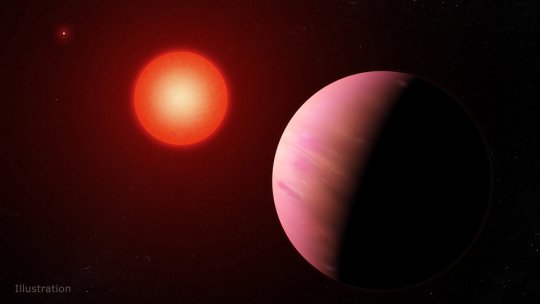
from Ricky Schneiderus Curation https://twitter.com/NASAJPL/status/1082397693761048576
0 notes